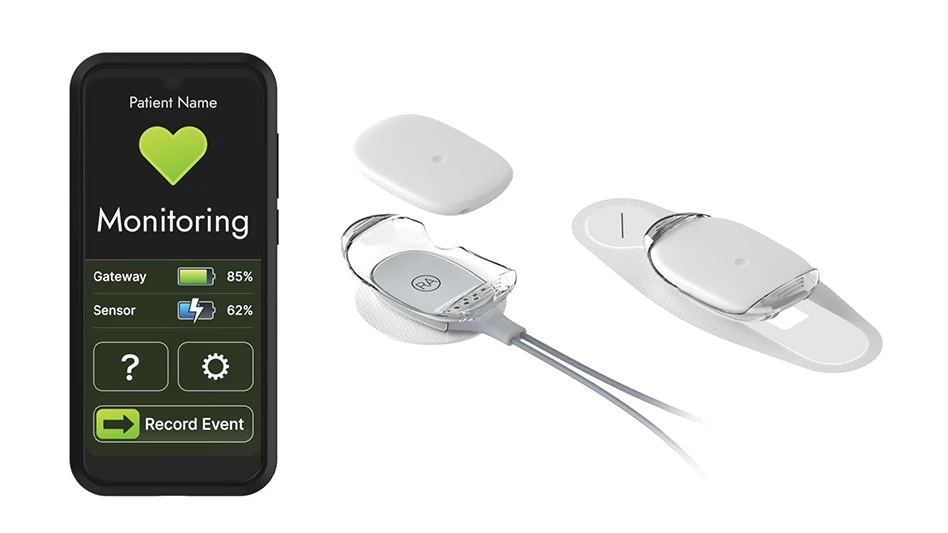Cleveland, Ohio – I’ve seen videos and pictures of the Indego exoskeleton – Independent Go (Indego) – but nothing prepares you for seeing Michael Gore stand and walk. Right: Co-Developer of the Indego, Ryan Farris, explains the components of the Indego to Sen. Sherrod Brown (D-OH). U.S. Sen. Sherrod Brown and select media outlets got a live demonstration of Parker Hannifin Corporate Technology Ventures’ work on the Indego exoskeleton. Demonstrating this amazing device – covered in June 2014, March 2014, and April 2013 issues of TMD – was Michael Gore is a T10 paraplegic who, when using the Indego exoskeleton, can stand up, walk, turn corners, and climb a set of stairs. Right: T10 paraplegic Michael Gore, seated in his wheelchair while wearing the Indego. Gore doesn’t get to walk often, as the Indego is still in the research phase so he can only use the device in a research setting and is not able to take it home to use. However, the demonstration on Monday shows how near the future is for paraplegics, stroke victims, multiple sclerosis patients, and others to be to walk on their own. The demonstration, held at the new Corporate Technology Venture facility of Parker Hannifin, Macedonia, Ohio, highlighted Sen. Brown’s interest in seeing how manufacturing is growing in Northeast Ohio. Head, Human Motion and Control Business, Vice President, Business Development, Achilleas Dorotheou, explained that the Macedonia facility is where they are designing and building the devices. These Indego models will then go into use for clinical trials – taking place at five rehabilitation centers around the U.S., part of the requirement for FDA approval. The group expects to produce about 70 units per year, which start at a cost of $70,000. The Human Motion unit, which currently has nearly two-dozen employees, expects to gain CE approval for Indego within the next year, and manufacturing and production of the first devices would be remain in Ohio with the devices being exported to Europe. Once the business venture reaches full-scale production, the start-up would move out of the Macedonia facility, but Parker Hannifin’s Vice President – Chief Technology & Innovation Officer, Craig Maxwell, assured us all that production would remain in Ohio. Seated in his wheelchair (see image below), Gore turned on the Indego; “primed” his legs – by pulling them back closer to the wheelchair – put his arms in the support crutches, and leaned forward. Then, in one smooth movement, with a slight hum of motors, Gore stood. Weighing in at 26 lb, the Indego works by sensing the wearer’s standing position – when they lean forward or lean backward. Once activated, the machine vibrates to tell the wearer when it is ready to activate. Motors at the knee and hip of the exoskeleton help lift the user’s leg, while forward momentum enables the leg to move forward. Being a witness to this was truly a moving experience, and one that reinforces my continual coverage of design and manufacturing within the medical sector. Advancements continue to amaze and inspire for what is head for this industry. ~Elizabeth.jpg)
 (Left): Pictured left to right are Sen. Sherrod Brown, Craig Maxwell, and Ryan Farris.
(Left): Pictured left to right are Sen. Sherrod Brown, Craig Maxwell, and Ryan Farris..JPG)
Latest from Today's Medical Developments
- VersaBuilt’s CNC automation possibilities
- ROBOTICS AWARD 2025
- There’s still time to register for this week’s manufacturing industry webinar!
- Arterex acquires Phoenix S.r.l., a leading Italian medical device solution provider
- FAULHABER’s expanded portfolio of high-performance DC motors
- NAMSA will acquire WuXi AppTec facilities in Minnesota and Georgia
- Tolomatic’s Drive Integration Tool
- Cutting Edge Innovations: Maximizing Productivity and Best Practices with Superabrasives







